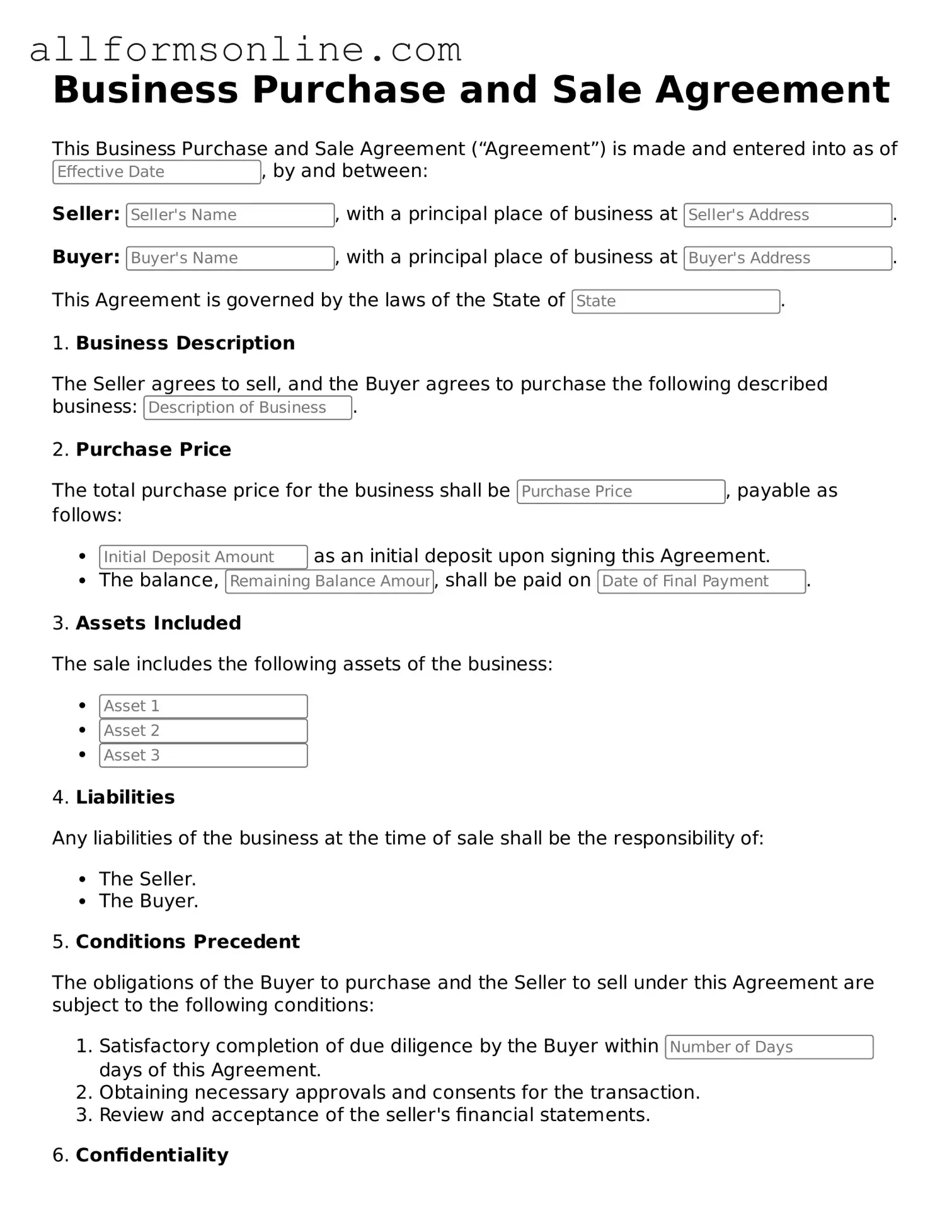What is a Business Purchase and Sale Agreement?
A Business Purchase and Sale Agreement is a legal document that outlines the terms and conditions under which a business is sold. It serves as a contract between the buyer and seller, detailing the assets being sold, the purchase price, and any other relevant terms. This agreement helps protect both parties by clearly defining their rights and obligations during the transaction.
Why is this agreement important?
This agreement is crucial because it provides clarity and legal protection for both the buyer and the seller. It minimizes misunderstandings and disputes by specifying what is included in the sale, such as inventory, equipment, and intellectual property. A well-drafted agreement can prevent future legal issues and ensure a smoother transition of ownership.
What should be included in the agreement?
The agreement should include several key elements: a description of the business being sold, the purchase price, payment terms, any contingencies, and representations and warranties from both parties. It may also outline the responsibilities of the seller after the sale, such as training the new owner or assisting in the transition.
How is the purchase price determined?
The purchase price is typically determined through negotiation between the buyer and the seller. Factors influencing the price may include the business's financial performance, market conditions, and the value of its assets. An appraisal or business valuation can also provide insights to help both parties agree on a fair price.
Can the agreement be modified after signing?
What happens if one party breaches the agreement?
If one party breaches the agreement, the other party may have legal recourse. This could include seeking damages or specific performance, which means asking the court to enforce the terms of the agreement. The specific remedies available will depend on the nature of the breach and the terms outlined in the agreement.
Is legal assistance necessary when drafting this agreement?
While it is possible to draft a Business Purchase and Sale Agreement without legal assistance, it is highly recommended to consult with an attorney. Legal professionals can ensure that the agreement complies with state laws and adequately protects your interests. Their expertise can help identify potential issues that may not be immediately apparent.
How long does the process take?
The duration of the process can vary widely. It depends on factors such as the complexity of the business, the negotiation process, and the due diligence required. On average, it may take several weeks to a few months to finalize the agreement and complete the sale.
What are the tax implications of selling a business?
Selling a business can have various tax implications, including capital gains taxes on the profit made from the sale. The specific tax consequences will depend on how the business is structured and the terms of the sale. It is advisable to consult with a tax professional to understand the potential impacts and plan accordingly.
What if I have more questions after reading this?
If you have additional questions, it is always best to seek professional advice. Consulting with an attorney or a business advisor can provide tailored guidance based on your specific situation. They can help clarify any uncertainties and ensure that you are making informed decisions throughout the process.
